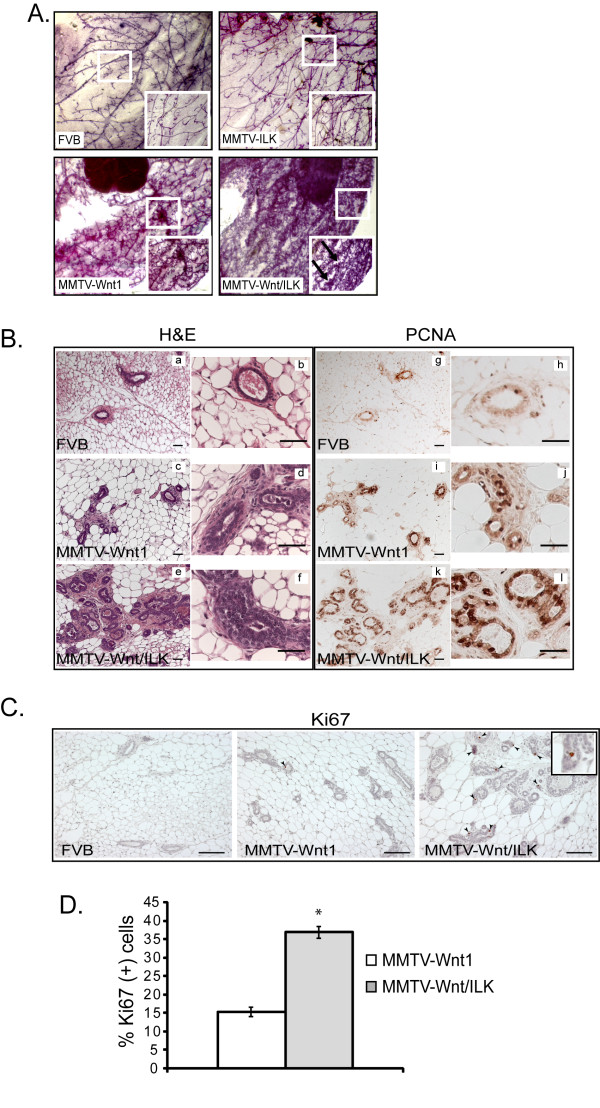Figure 3.
Pre-neoplastic mammary gland analysis. (a) Whole-mount ductal outgrowths from 10- to 12-week-old FVB, MMTV-Wnt1, and MMTV-ILK mice and 8-week-old MMTV-Wnt/ILK mice show a marked enhancement in the ductal network of MMTV-Wnt/ILK pre-neoplastic mammary glands at an earlier age. Images were taken by using a dissecting microscope at 4× magnification. Black arrow shows an area of dense alveoli. (b) Sections from inguinal mammary glands of 8- to 9-week-old mice were stained with H&E and PCNA. Mammary gland taken from an FVB mouse shows a normal glandular epithelial (a,b) and minimal PCNA staining (g-h), whereas sections from MMTV-Wnt show more hyperplasia (c,d) and more PCNA staining (i,j). Section of mammary glands from MMTV-Wnt/ILK mice shows an even greater epithelial hyperplasia, multilayered and disorganized ductal epithelium (e,f), as well as a marked increase in PCNA staining (k,l). The pictures are representative of at least five different stainings. Scale bars, 50 μm. (c) Ki67 was used as an additional marker to confirm the higher proliferation status of the MMTV-Wnt/ILK pre-neoplastic mammary glands. Scale bars, 100 μm. (d) Ki67-positive staining is quantified based on the number of the mammary lumina containing Ki67-positive cells. At least 50 mammary lumina were counted in each condition in randomly selected fields of view. Data represent mean ± SD. *P < 0.04 was calculated by using a paired two-sample t test.

